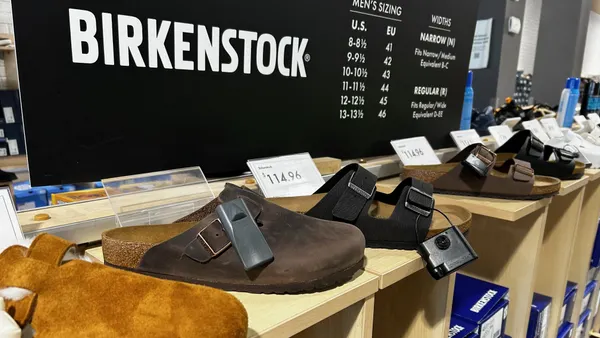Dive Brief:
- All of Zara parent Inditex's brands will be globally available online by 2020, including in areas without any stores, CEO Pablo Isla told journalists in Milan on Tuesday, according to an account of the announcement posted online by the company.
- Inditex has put in place a new RFID-enabled stock management in Zara stores in 25 markets, including Spain, France, Italy, China, the U.S., the U.K. and Mexico, that allows that brand to fulfill online orders from stores, the company also said. All Inditex brands will adopt that system by 2020 in the countries where they run a physical store, he also said.
- Finally, also by 2020, the company is on pace to operate all stores under its eco-efficiency plan, which entails energy savings of 20% and water savings of 50%. Those systems are already in place in 80% of its stores, including all in China.
Dive Insight:
Inditex's Zara years ago sped up fashion production and logistics through manufacturing and supply chain innovations, and now the company is making apparel e-commerce sound easy.
Isla in June seemed to shrug off questions about how the retailer could pull off its ambitious store-based fulfillment goals by the end of the year, emphasizing that in some cases it would be the best way to satisfy customers' online orders. The system supports same-day delivery in cities where it has both stores and e-commerce, and otherwise the company has said it will offer next-day shipping. He seems to have met the goal early, not just at Zara but also at the company's smaller Uterqüe brand.
But Isla is topping that off with his proclamation that all Inditex brands will soon be sold online, everywhere in the world. It's a striking expression of confidence in the company's logistical systems. "We want to make our fashion collections available to all our customers, wherever they are in the world, even in those markets which do not currently have our bricks-and-mortar stores," he said.
Apparel sales have moved steadily online, but the logistics are bedeviling retailers. Almost half of U.S. online shoppers bought apparel last year, and annual apparel online spend per buyer rose 11% compared to 2016, according to global information company NPD Group. While in-store purchases declined 3% compared to 2016, online apparel sales rose 7% to $46 billion, according to the report.
That's stoking returns, too, making online sales of apparel even more expensive. Shoppers want to "try before they buy" clothing online, so many buy multiple items with the intent to return some, especially apparel, which is returned most often (43%), according to research from post-purchase solutions firm Narvar. On average, 40% of shoppers do so at least occasionally, with 45% of those under 30 and 48% of those with incomes over $100,000 indulging in the practice.
That habit is getting expensive for retailers. According to returns and overstock supply company B-Stock, $400 billion in merchandise is being returned to stores.
It's not clear how well even e-commerce giant Amazon has conquered such obstacles, despite its increasing apparel sales. But Inditex may possess the experience necessary to figure it out. The company has invented and continually refined its fast-fashion systems, enabling it to manage distribution in a way that has failed rival fast-fashion retailer H&M. The Swedish apparel company, by contrast, in recent quarters has struggled under the weight of bloated inventories that have plagued sales.














